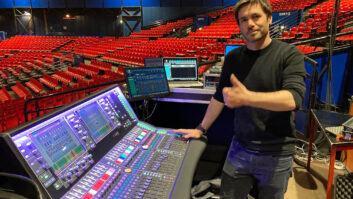PARIS, March 26 (Reuters) – It seemed an unlikelyplace to discuss how to communicate with aliens — a grey house offa nondescript alley in a none-too-interesting suburb of Paris.
But as rain poured from the heavens outdoors, scientists,astronomers, artists and musicians hunkered down in the warmsitting room of the private home to swap ideas on how to chat withE.T. — if he ever calls. And what, if anything, to say.
Seemingly fulfilling every possible cliche — from a youngcomputer whiz, to a softly-spoken NASA scientist, a professor witha shock of white hair and an excitable Russian — the group ofrespectable professionals were earnest in their arcaneendeavours.
Mathematical equations filled overhead projection slides, exoticIndonesian gong music rang out and the talk was of complexscientific phenomena and deeply philosophical questions about thenature of human beings and their relationships.
“We are not trying to find the best message or even the mostintelligible,” said Douglas Vakoch, who led the Paris workshop. Inhis other incarnation, Vakoch runs the interstellar message groupat the Search for Extraterrestrial Intelligence (SETI) institute inthe United States.
“I think we should construct thousands of messages in the hopeone of them could be understood…I think there is a reasonablechance we can overcome the barriers between human andextraterrestrial worlds, but maybe we can’t.”
“Maybe, even if we get a signal from them, their way ofconceptualising will be so alien to us that we just can’t.”
GOOD LISTENERS
SETI, a private non-profit organisation sponsored by the U.S.government, NASA and technology giants such as Sun Microsystems,has been monitoring radio signals for the past 40 years in the hopeof picking up a transmission from outer space.
“We have to use the tools that we have right now to search forsigns of alien life. We are very hopeful,” Vakoch said, as he satin the kitchen of the Paris house.
“We are looking for signals by radio…but we can’t rule outthat they may already be trying to contact us and we can’t detectthem.”
But, with computer and other technologies making advances allthe time, Vakoch argues it is time to get serious about working outwhat, if anything, humanity would want to say to an aliencivilisation.
The assumption is that any signals picked up by SETI will be inradio form and therefore the alien sending the message will likelyhave similar technology and share our language of physics and maths– making possible a conversation, of sorts.
And that is where the Paris meeting comes in.
In the house of the late Frank Malina, a U.S. pioneer in jetpropulsion, and in the very rooms that some of the early Russiancosmonauts spent time learning English, the assembled artists andscientists put their heads together to brainstorm possiblemessages.
“Today the focus has been on whether we can explain somethingabout our aesthetic sensibilities. Is there something about artthat is either universal or that can be taught, step by step, toanother intelligence?” Vakoch said.
MUSIC, PAINTING, MATHS, RAINBOWS
Surrounded by walls covered in Malina’s kinetic art — pulses ofelectric light shining through moving elements — people from sixnations discussed what aspects of the human understanding of artand beauty could be revealed to other beings.
A professor of theoretical computer science suggested usingmusic as a teaching aid to help aliens learn a coded language forcosmic conversations. He suggested employing the strange sounds ofIndonesian gongs and gave a demonstration — once he had worked outhow to switch on the tape recorder.
An artist suggested using a rainbow as a metaphor for mankind’sunity through diversity; a symbol of peace and a bridge. He wouldlike to transmit the mathematical formulae for colour wavelengthsso that alien beings could create rainbows for themselves.
“Imagine how amazing it would be if we introduced colour into analien species’ life for the first time,” he said.
Others talked of algorithmic communication or computer systemsthat mimic human responses.
For Vakoch, all the theorising serves another usefulpurpose.
“The truth is we don’t know if there is alien life out there butin thinking about how we would communicate something about oursense of beauty or who we are, we are forced to reflect differentlyon ourselves and question our basic assumptions,” he says.
In discussing alien life and how it may or may not differ fromour own, Vakoch says, the differences here on earth betweencultures, ethnic groups, nationalities and the sexes are put into acontext which renders them less significant.
PS: This is no joke!







